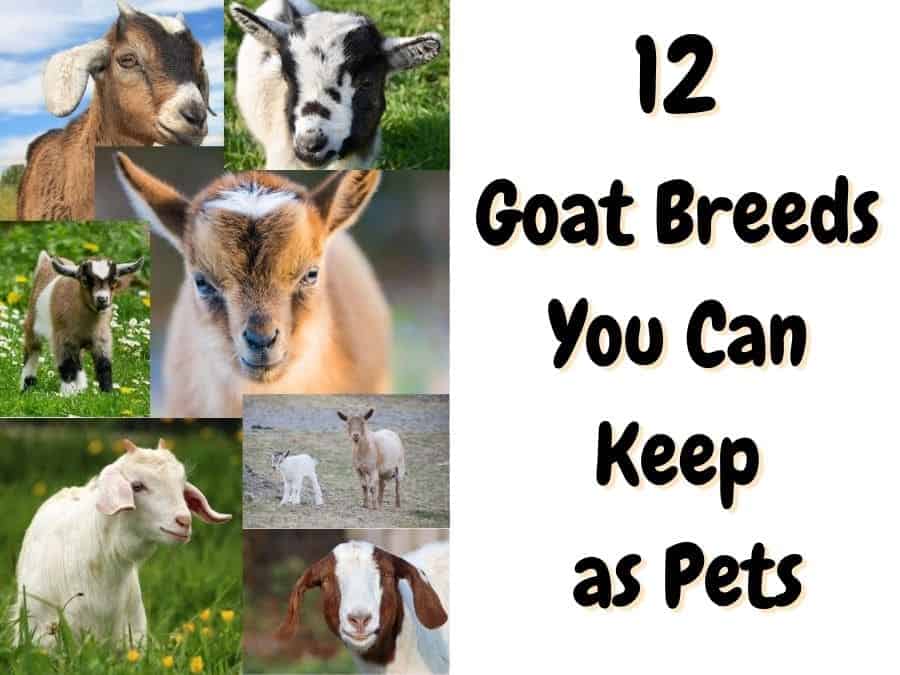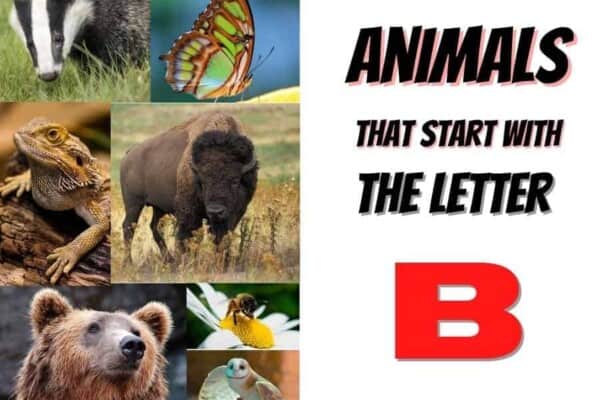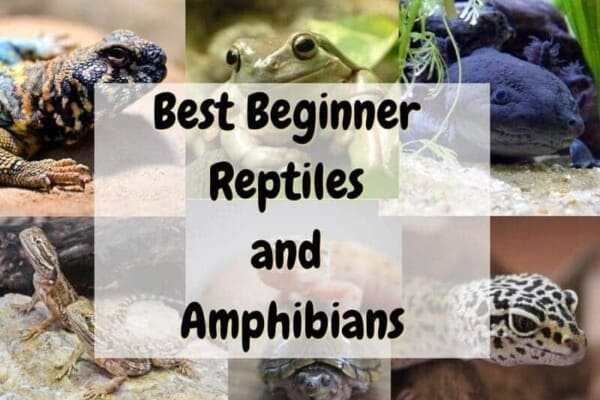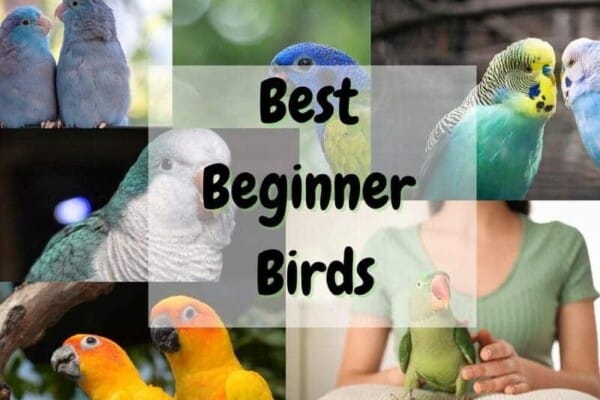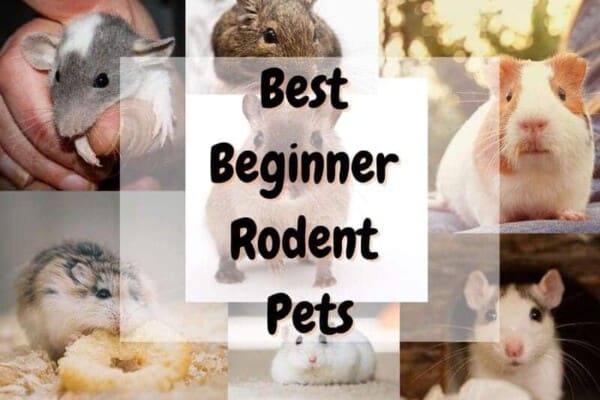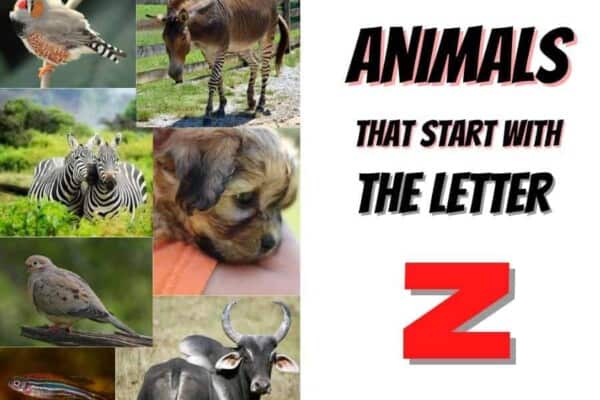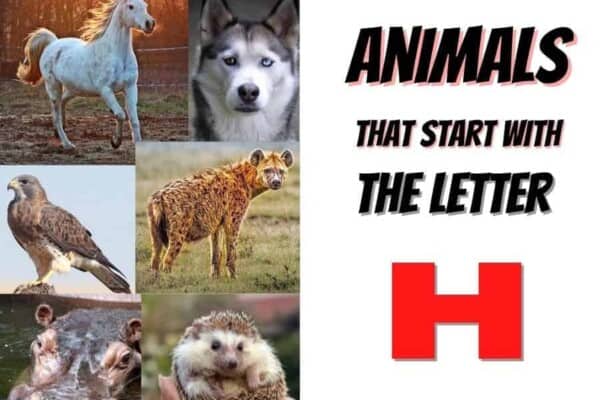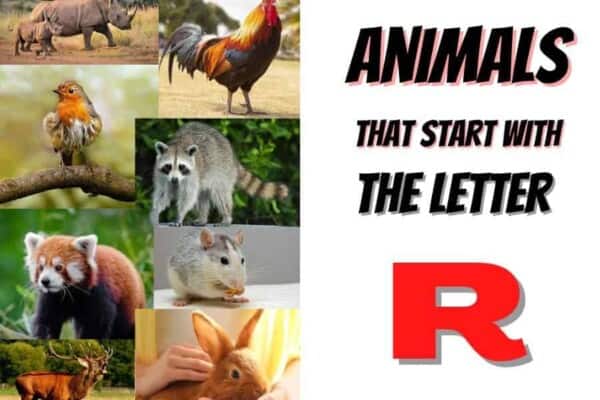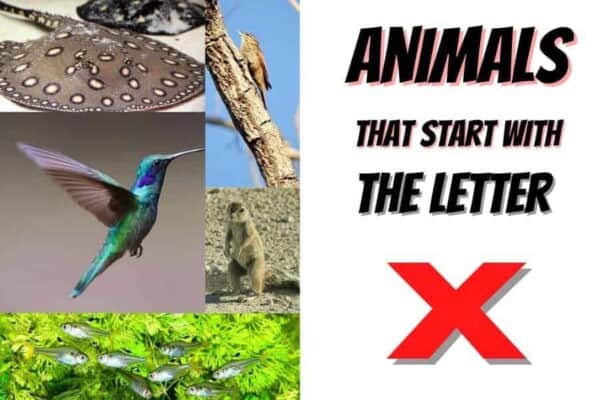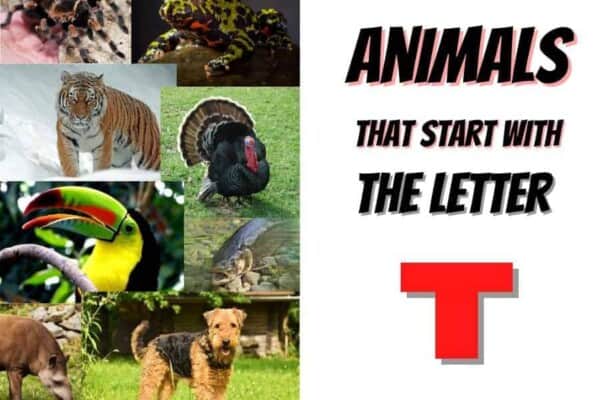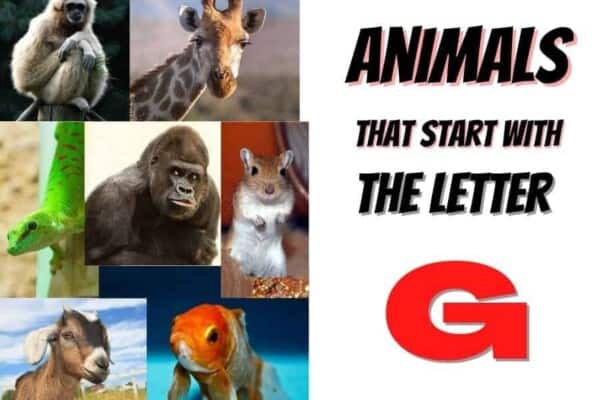If you live in the countryside and are looking for an original pet that is different from the usual dog or cat, a small goat might be exactly what you are looking for. Goats have really unique personalities and also have the added benefit of producing milk and fur, just in case you are also looking to feed and clothe your family at the same time!
This post features the 12 best goats you can keep as pets according to goat breeders and owners alike. It will also provide a few practical tips before bringing one of these original pets into your home. As you will see, while keeping a pet goat can be a good idea, it does come with a couple of challenges. Still interested? Then read on!
12 Best Goats You Can Keep As Pets
1. Pigmy Goat
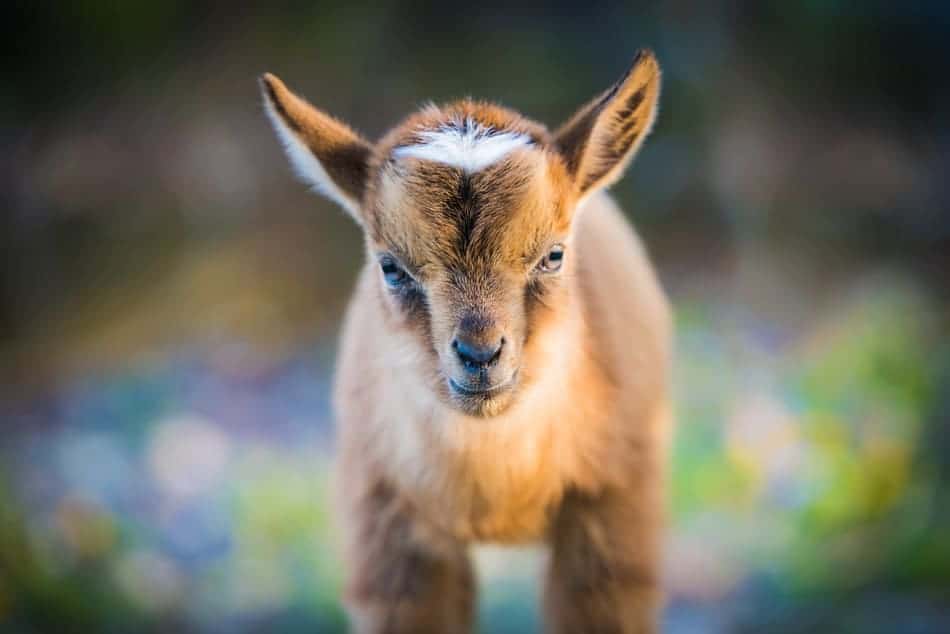
Pigmy goats are extremely friendly animals and absolutely love to snuggle up with their owner. Their personalities also make them great with small children. Many families will get this breed to help teach their children responsibility with chores.
As far as personality goes, pigmy goats are extremely adaptable, so they tend to be good pets in a variety of different environments.
Part of what makes pigmy goats such great pets is their small size. They tend to be between 16 and 23 inches tall and weigh between 55 and 85 pounds, and they have disproportionately small legs, which is part of why people love them so much.
Pigmy goats are usually used as family pets rather than for milk, though they do typically produce between one and two quarts of milk, so small families may use them as both a pet and for milk.
2. Nigerian Dwarf Goat
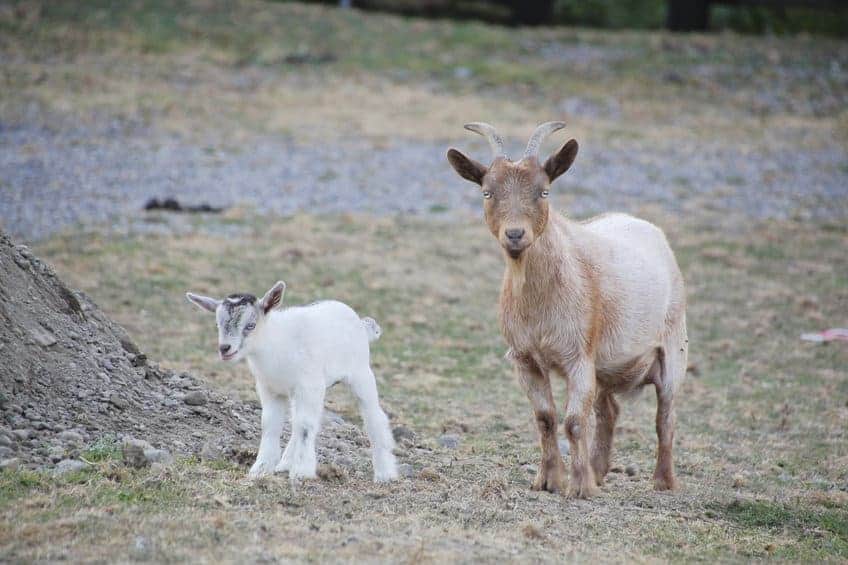
Nigerian dwarf goats have been housed in zoos for years, but in 2005 they were approved to be kept as pets and for dairy by the American Dairy Goats Association. These dwarf goats are usually between 22 and 24 inches tall, and they weigh about 75 pounds.
However, there are also Nigerian dwarf goats bred specifically as pets. These goats are very intelligent creatures which can make them a lot of fun to keep as pets, but they are also known to be quite stubborn. Because of this, they can be known to get into things that you try to keep them out of. It also means they can be quite the adept escape artists, so you want to make sure that you keep them secure.
If you do get a Nigerian dwarf goat for dairy, they tend to be fairly easy to milk, and their milk is richer than many other breeds.
3. LaMancha Goat
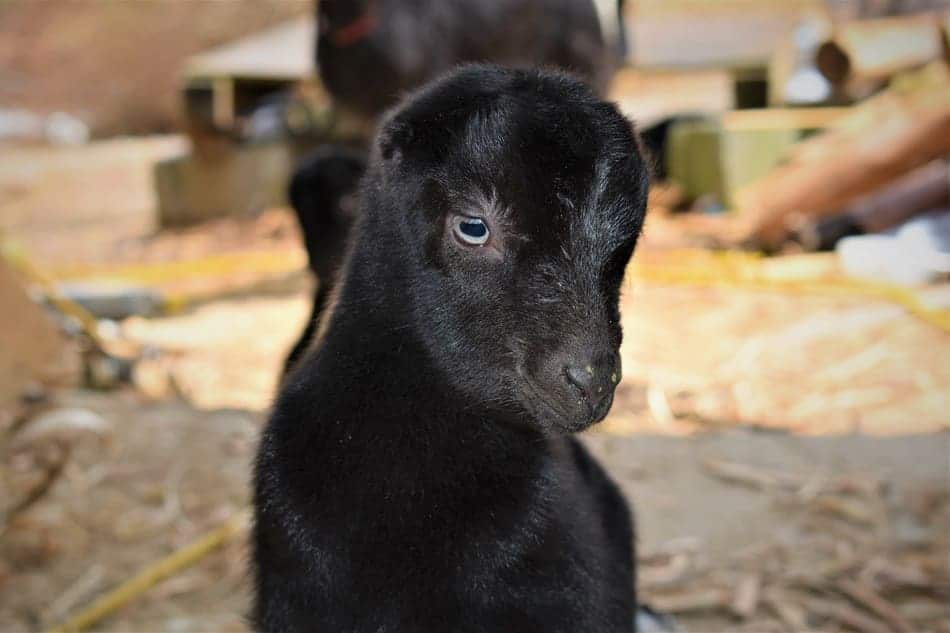
LaMancha goats were developed in North America to be dairy goats. Because of this, they make significantly more milk than a lot of other miniature goat breeds, and their milk is 4% butterfat, so it can be used to make cheeses and spreads.
These goats are extremely gentle and friendly creatures. While you might have some problems with other goat breeds getting aggressive or fighting with each other over food, LaMancha goats are much more likely to sit back and watch than try to fight for what they want.
As far as physical appearance, LaMancha goats grow to be no taller than 28 or 29 inches tall. They come in pretty much every color a goat can come in, but their most unique physical feature is their ears. Lamancha goats’ ears are so short they practically look like they have no ears at all!
4. Kinder Goat
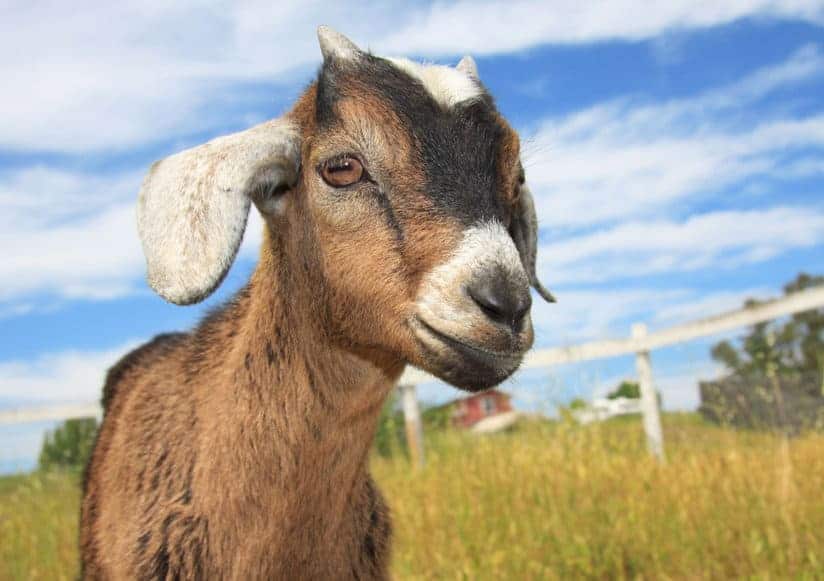
The Kinder goat was bred in the 1980s as a cross between a Pygmy and a Nubian goat. They usually grow to be between 20 and 26 inches tall, though bucks can get as tall as 28 inches. Nevertheless, they are one of the heavier goat breeds as they can weigh between 115 and 150 pounds.
The Kinder goat has long ears and fine fur. These goats are a lot of fun to have around because they have a ton of energy which makes them very entertaining to watch. You will notice Kinder goats jumping all around, climbing things, and playing games with each other all day long.
Additionally, if you are looking for a goat that produces milk in addition to being a great pet, the Kinder goats will be a good option for you. Many people do keep Kinder goats as dairy animals rather than just as pets.
5. Nubian Dwarf Goat
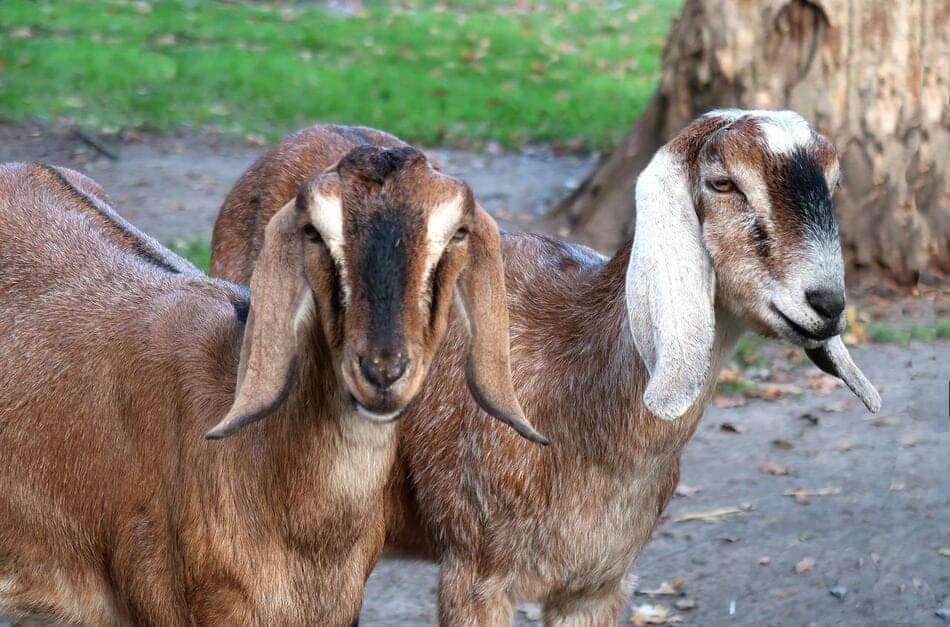
Nubian goats originated in England. There the breed is referred to as Anglo-Nubians, but then the dwarf Nubian breed was bred in West Africa.
You may also hear this smaller Nubian breed referred to as mini Nubians. They are a fairly short species, not growing taller than 22 or 23 inches tall, though you want to make sure you are getting the dwarf breed if the size is important to you because the Anglo-Nubian can get rather large.
One unique feature of the breed is their very long, wide ears that droop down below their muzzles. As far as personality, Nubian dwarfs are known to be extremely friendly goats, which is what makes them so popular with families that have children.
6. Mini Saanen Goat
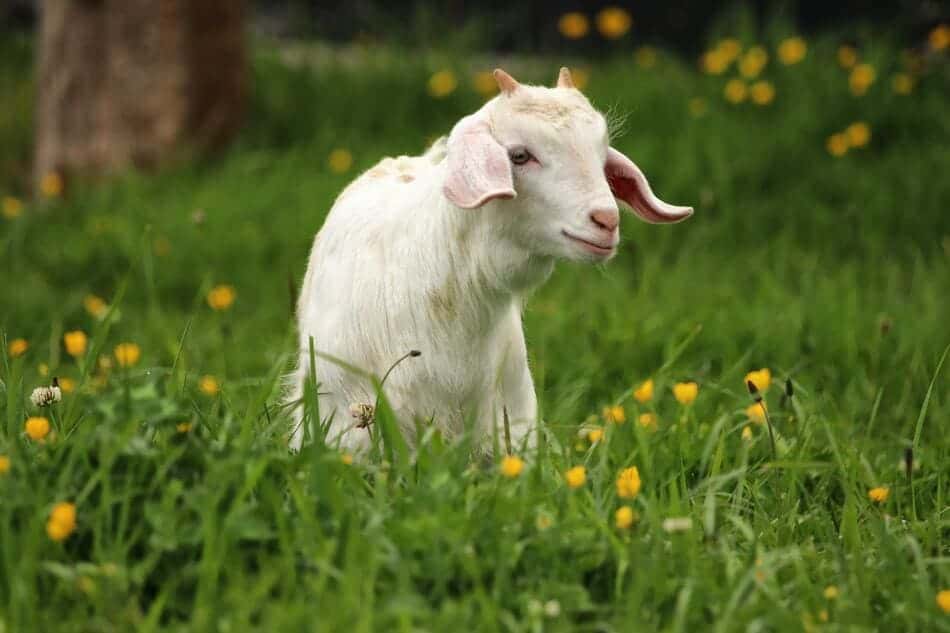
Mini Saanen goats are one of the most popular goat species people keep as pets. They come in beautiful whites and cream colors, though there are mini sables that come in other colors and are sometimes grouped in with the Saanen breed.
To be considered a mini Saanen, they do have to be shorter than 29 inches. This breed is very friendly, and many people choose them over some of the other goat breeds on this list because they are relatively quiet – a trait many goats lack!
7. Pygora Goat
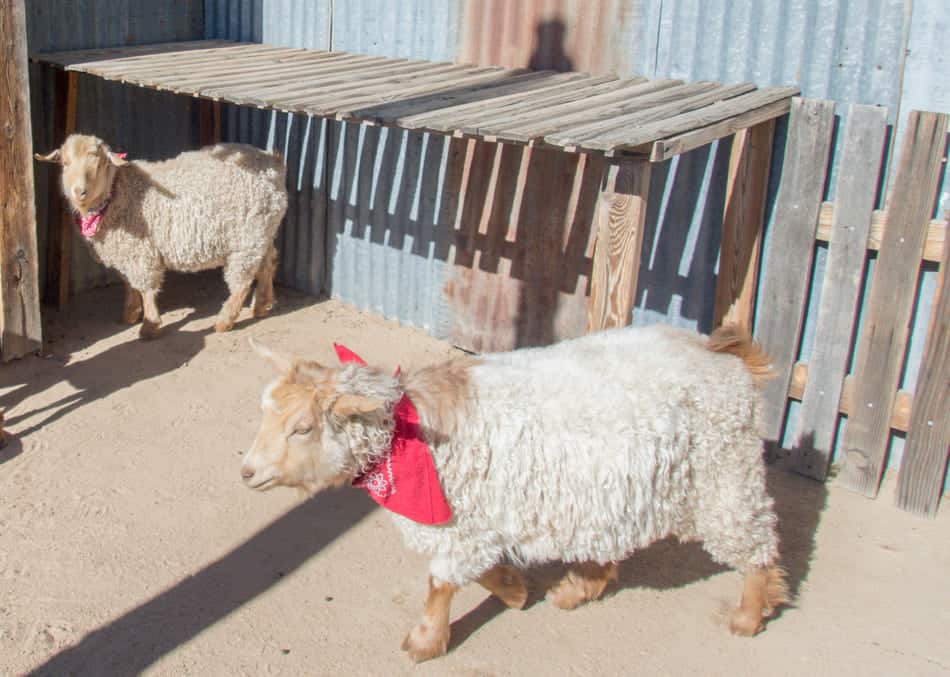
Pygora goats, as the name implies, are a cross between Pygmy goats and Angora goats. Like Angora goats, Pygoras are considered fiber goats which means they have thick coats that can be sheered and used to make fabric. Their coat can come in a few different colors (caramels, whites, blacks, and agoutis.)
These goats are small, which is why they are referred to as house goats. They can make great pets in suburban and urban areas that might have size restrictions. They are also very friendly animals and, as far as goats go, they are fairly easy to care for.
8. Mini Alpine Goat
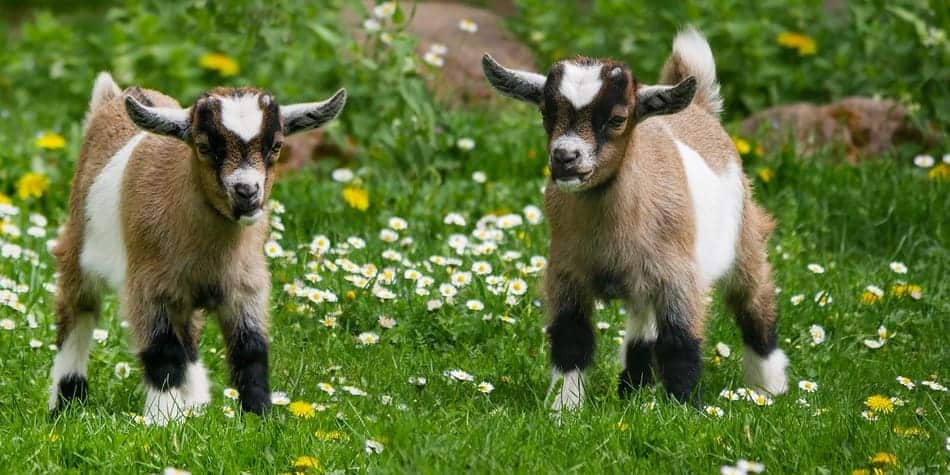
Mini Alpine goats look just like their larger alpine goat counterpart. They have very straight faces and relatively large ears that stick up. As far as size goes, the full-size alpine goats are at least 30 inches tall (usually taller), while the mini alpine goats have to be shorter than 30 inches.
They are known to be great dairy goats, but it is important to note that these goats are hyperactive. That means that they can be a little bit more challenging to care for if you are not used to caring for goats and dealing with their silly antics. They can be a bit pushy, especially if there is food involved, so while they are friendly animals, they are not as gentle as some other breeds on this list.
9. Boer Goat
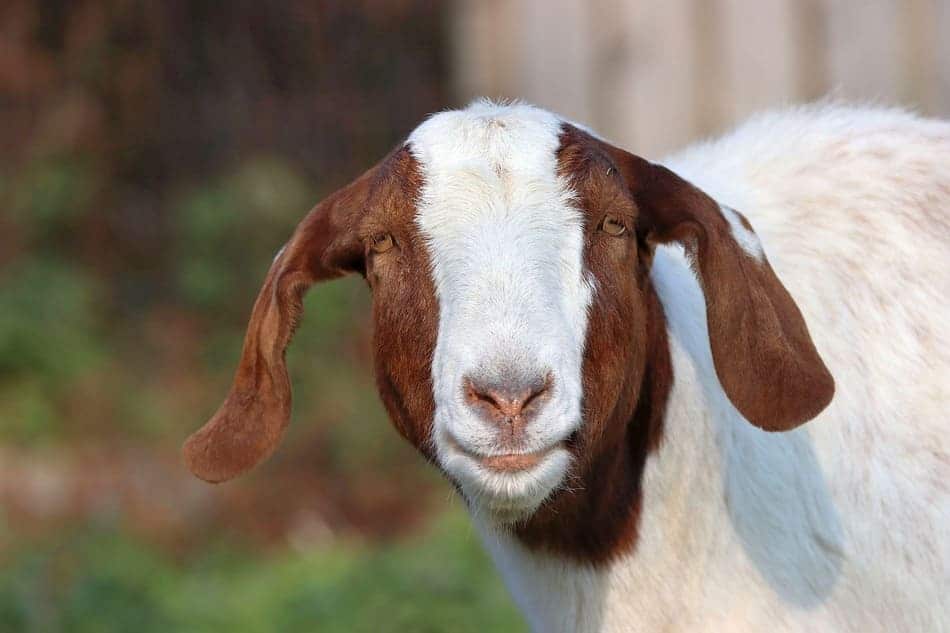
Boer goats typically have white bodies and redheads (though they can come in a variety of colors.) They have long droopy ears and long beards. This breed is very hardy, so keep in mind that they can get quite large. Bucks are known to grow to be up to 300+ pounds.
They are also very fertile, so they make great goats if you are looking to be a breeder, but the bucks are known to produce a rather unpleasant odor.
Whether the Boer goat makes a good pet really seems to depend on the owner. Some people absolutely love this breed, while others find them challenging to care for. If you do decide to go with a Boer goat, just remember that they do require a good bit of food.
10. Nigora Goat
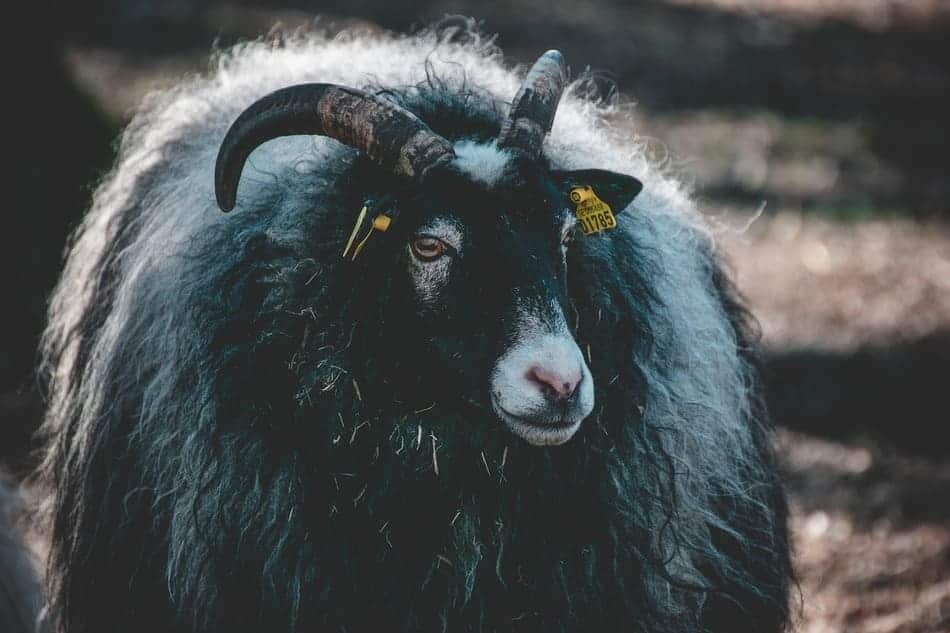
Nigora goats are a cross between Angora goats and Nigerian dwarf goats. They are considered fiber goats, so you can expect them to have a very fluffy fur coat. You can get a Nigora goat in a variety of colors and patterns.
As far as personality, they are very sweet-natured and fun-loving animals, though you do need to be careful with training, especially if you are going to have children around these goats. Best not to teach them any tricks related to head butting or jumping on your back…
The other important thing to note about Nigora goats is that they are herd animals. That means if you only get one Nigora goat, he will likely end up feeling lonely and depressed, so make sure that you get at least two.
11. Mini Oberhasli Goat
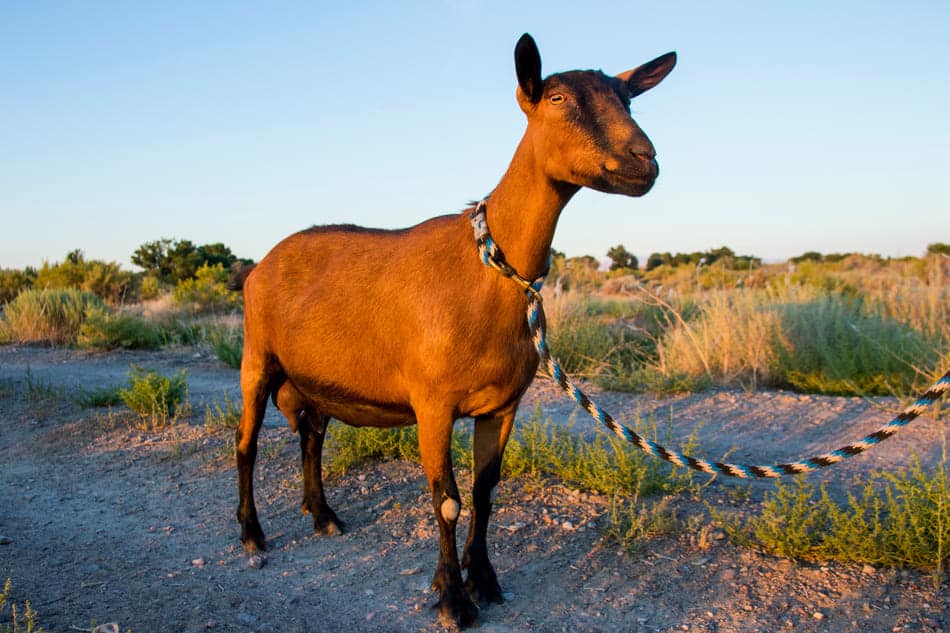
Mini Oberhasli goats originated in Switzerland, and they are most recognized for their coats. Most of their coat is a red color, but they have black muzzles, bellies, legs, and a dorsal stripe going down their back. These animals are very hardy and family-friendly, though they do have rather long and powerful horns that can become a problem.
If you are looking for a milk goat, the mini Oberhasli is a great option. They produce about a gallon and a half of milk every day, and many people say the flavor is much sweeter than the milk from other goat breeds. It is commonly used to make things like ice cream, which can be a lot of fun on a family farm.
12. Mini Myotonic Goat
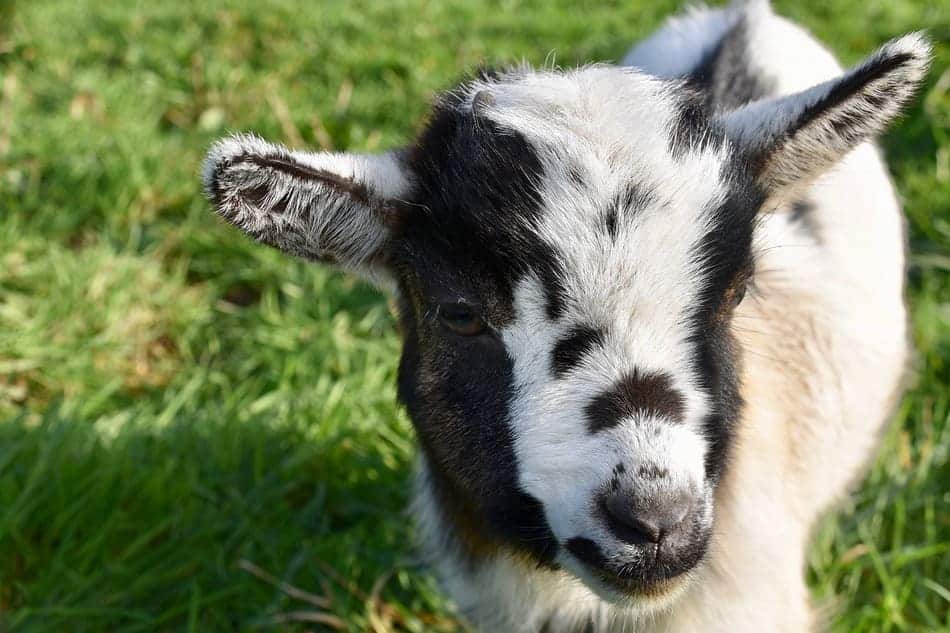
Mini Myotonics, also known as “mini fainting goats”, are best known for their natural instinct to ‘faint’ when exposed to loud or startling noise. This surprising characteristic is what makes them such popular pets; however, they were put on the endangered list in the 80s.
Mini Myotonics are usually between 17 and 25 inches tall, and they weigh between 70 and 150 pounds. What makes them such great pets, even for beginners, is that they are relatively easy to care for and keep contained. However, it is important to keep in mind that because these goats are so gentle, you do have to be really good at keeping predators out.
Keeping Goats as Pets: Care Tips and Tricks
- Keep goats in pairs or groups: For the most part, goats are herd animals, and they will get sad or even depressed if kept by themselves. Whenever you bring home a goat, it is usually a good idea to bring them home in pairs or small groups.
- Keep them dry: Pretty much all goats hate to be wet. This means you are going to want to make sure you provide your goats with a shelter where they can go to keep dry anytime it rains, or you have to water the grass.
- They don’t actually eat anything and everything: It is a common misconception that goats can eat pretty much anything. And while goats are known for getting into trouble by knawing on things they shouldn’t, you actually do need to be fairly purposeful about what you feed your goats. The best food for them is usually timothy hay or grass hay.
- They are challenging to keep inside a house: While some people adopt goats and keep them in their homes, this does not typically work out well. Even the gentler goat breeds tend to be fairly rambunctious, and they love to jump and play. Because of this, they can end up getting into a lot of trouble and breaking stuff if they are kept in the house. Additionally, they can be rather hard to house-train.
Frequently Asked Questions
Where and how can you buy a goat?
The best way to buy a goat is to find a breeder in your area. Once you know what kind of goat you want to get, start looking around for breeders that sell that specific breed.
Once you think you have found a breeder, ask around and look into them to make sure they are reputable. If people have good things to say about them, go ahead and reach out to inquire what their process is for selling goats because different breeders all have different processes.
Which breed of goat is the friendliest?
Pigmy goats are definitely considered one of the friendliest goat breeds that there is. They are even known to enjoy cuddling with their people. Because of this, they are a great option for beginner goat owners or families with small children who are interested in adopting some goats.
What breed of goats is best for beginners?
In addition to pigmy goats, Nubian goats generally make pretty good pets for beginners, especially Nubian dwarf goats, because they are very easy to take care of. Mini Saanen goats are also relatively good for beginners because they are so docile and less likely to get out, escape, and create a whole lot of havoc.
Related articles

